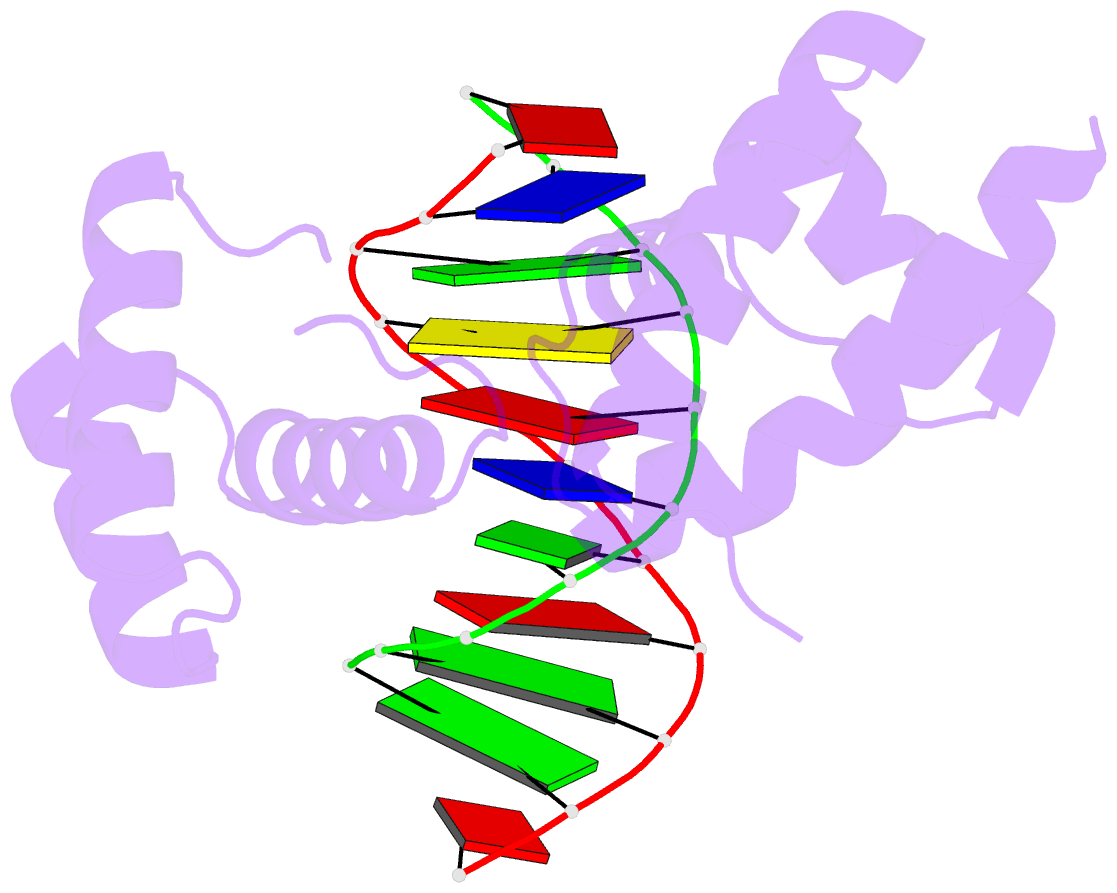Summary information and primary citation
- PDB-id
- 7xrc; SNAP-derived features in text and JSON formats;
DNAproDB
- Class
- transcription-DNA
- Method
- X-ray (1.89 Å)
- Summary
- Crystal structure of the dimeric brn2 (pou3f2) pou domain bound to palindromic more DNA
- Reference
- Tan DS, Cheung SL, Gao Y, Weinbuch M, Hu H, Shi L, Ti SC, Hutchins AP, Cojocaru V, Jauch R (2023): "The homeodomain of Oct4 is a dimeric binder of methylated CpG elements." Nucleic Acids Res., 51, 1120-1138. doi: 10.1093/nar/gkac1262.
- Abstract
- Oct4 is essential to maintain pluripotency and has a pivotal role in establishing the germline. Its DNA-binding POU domain was recently found to bind motifs with methylated CpG elements normally associated with epigenetic silencing. However, the mode of binding and the consequences of this capability has remained unclear. Here, we show that Oct4 binds to a compact palindromic DNA element with a methylated CpG core (CpGpal) in alternative states of pluripotency and during cellular reprogramming towards induced pluripotent stem cells (iPSCs). During cellular reprogramming, typical Oct4 bound enhancers are uniformly demethylated, with the prominent exception of the CpGpal sites where DNA methylation is often maintained. We demonstrate that Oct4 cooperatively binds the CpGpal element as a homodimer, which contrasts with the ectoderm-expressed POU factor Brn2. Indeed, binding to CpGpal is Oct4-specific as other POU factors expressed in somatic cells avoid this element. Binding assays combined with structural analyses and molecular dynamic simulations show that dimeric Oct4-binding to CpGpal is driven by the POU-homeodomain whilst the POU-specific domain is detached from DNA. Collectively, we report that Oct4 exerts parts of its regulatory function in the context of methylated DNA through a DNA recognition mechanism that solely relies on its homeodomain.





